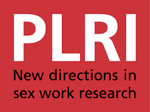Although the prevalence of HIV in the general population is low (0.2%) and is mainly concentrated among injecting drug users (IDUs) in Jakarta, West Java and Bali, the epidemic has now spread to other key populations at higher risk such as non‐injecting partners of IDUs, sex workers and their clients [1]. The number of reported cases attributable to sexual transmission increased from 17.6% in 1987‐1990 to over half of the reported cases in 2009 [3],[4]. The estimated proportion of new HIV infections attributed to sexual transmission is projected to reach 58% by 2014 [5] and 42‐43% of new HIV infection will be attributable to female sex workers (FSWs) and their clients in 2012‐2014 [6]. Since 2000, the HIV epidemic has been concentrated in four particularly vulnerable sub‐populations (with prevalence >5%): IDU, sex workers (male and female), and men who have sex with men (MSM) including ‘waria’1 who sell sex [2].
In Papua and West Papua, the estimated and reported number of cases are the highest in Indonesia [7]. In Tanah Papua, high‐risk sexual behaviour (unprotected sex and frequently changing partners) is responsible for over 90% of HIV transmission both in urban and more isolated rural areas [2],[5]. Modelled estimates also showed that between 2009 and 2014, the proportion of female sex workers among total people living with HIV would be between 9‐10% [5]. In a survey conducted in 2006, HIV prevalence among the general adult population was estimated at 2.4% and reached 3.2% in the remote highlands and 2.9% in the less accessible lowlands
Theme:

